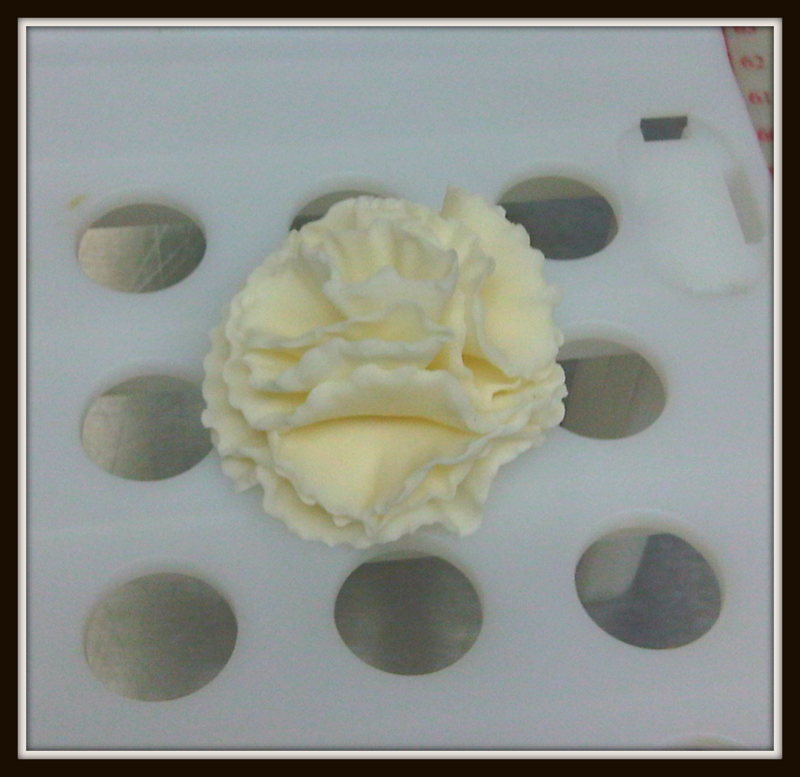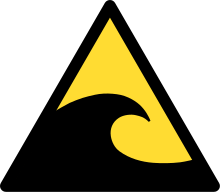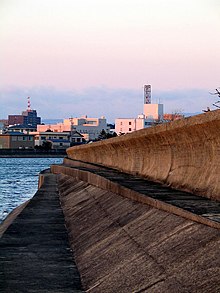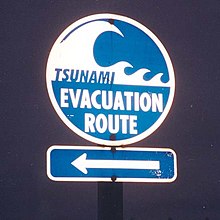14 April 2012.... xcited giler to attend d demo class by Chef Nurainie Tan .... malas cakap kome tgk je ler... apa dh jadik... semua nukilan my sifu tau... i tukang take pic jew... weeeee
Rabu, 18 April 2012
Selasa, 17 April 2012
1st time egg tart
malam senin d Seri Lido semang bosan. customer xde, staf ramai off... aduyai! keje2 pojek semua dh clear... tinggai banyak lagi... hihihi! Wan jie bawak kuo buku2 resepi dia yg bersepah dr dlm kete... et pun dok belek2... sekali mata dok berkenan kat resepi egg tart ni.... baca, belek, kira eh! macam semua bahan dah cukup je kat rumah... apa g tekad utk bake malam ni... perghh! xsabar nak balik jam 10.30 ni...
sampai rumah tengok gelap gelita... maknanya Nana & baby Irna balik Pasir Putih so, line tersangat clear. masuk rumah kua semua bahan & rehat sat baca email, study resepi & mandi... baju dalam mesin basuh.
bismilahirahmanirahimmm... berdebar ni, first time nak bake egg tart. jeng jeng jeng...
crust nya et belum tau g berapa ketebalan nya... setelah d masak baru et tau... nest et dh tau... huhuhu
dalam oven.... dup dap dup dap.... risau telur melimpah, jenuh nak mencuci oven ni kang...
dah tengah malam... nak cepat bake je dalam cupkek pan.... hahaha beso kott
hihihi.... sempat g tu
apa yg ada atas meja makan jadi mangsa perhiasan
tersangat gumbira coz it turns sangat sedap... et ni hantu egg tart tau, tiap kali lalu bakery sure tapau balik... dah lama nak buat tapi risau xjadi. entah kenapa bila terpandang resepi coz trus ada confiden nk bake... lagian dalam buku tu ada pic step by step... baru le dapat bayangan nya...
Jumaat, 13 April 2012
creamy homemade tiramisu ice cream....
kesinambungan dari kerja-kerja membuat kek...
hihihi... nexttt!
kelakor giler, my moms dok sebut-sebut je bahan-bahan nya... kelam kabut my sil memcari kertas & bebola mata pena utk menulis... sabor ke lerrr! when to GianT depan simpang my moms house je...beli some stuff yang xcukup... after getting all d stuff...balik & wait & wait & wait for our moms.... mak aiii bizy nya dia...
dengan bangga dia turun bawah capai remote & watch the tv, nganga et & mahani... amboi! langsi nya dia... kikiki! sambil menoleh she said " hah! apa lagi p la campur semua bahan & starts mixing, kang lambat... jam dah pukui berapa ni..." ~ aik! kami pun bergegas mencampurkan bahan-bahan... hermmm! memang larrrr berjam-jam lama nya nak tggu kembang & naik double. et bawak hand mixer je mak oiii! dari atas meja berdiri, duduk & sudahnya bersila d lantai... puas hati! dapat jugak tengok tv. cukup time boh dalam tupperware & bekukan...
jadi... esok early in the morning memang itulah breakfast nya... tiramisu kek & tiramisu ice cream... makan pai lebab.. et, my mom, fazal & mahani... kakaka kelakor!... et took a pic & post to FB & share wit my lil sista, pe g gediks2 la dia nak balik ipoh coz wednesday dia off & kebetulan her hubby ada d manjung for interview. my sis pai malam, her hubby fetch her kat medan gopeng, et standby d pertahanan awam till 12midnite!
theseeee are some pics...
ini baru 30 minutes
bergilir-gilir... sorang putar mixer, sorang putar mangkuk
comei nya cup nih from tupperware... jenuh la my lil sista selongkar gerobok my moms
red carpet!
this pics been taken @ 1am pada 11 April 2012 d rumah mak d batu 5, semua orang balik... fin sesi amik gambo, sesi makan... sesi gosip & et balik my own house d bercham... its a Public Holiday kepada seluruh rakyat Malaysia & yg sewaktu dengan nya... hari Pertabalan DYMM Agong baru... tp this is the 2nd time tuanku naik takhta as Agong... ~long live the King! tapi malang et kena koje, xde PH, xde double pay maupun triple pay... keje je lar.. tp 4jam jer...
morning 8am, send Irna Shereen p rumah nanny, achik ET & mummy bekpas kat holliwood, send mummy to work @ 9am... achik Et trus p toje tido dulu coz work starts @ 10.30am... till...
2.30pm habis toje trus balik rumah mak coz semua tunggu et untuk p shopping @ Aeon, station 18 yg baru d buka seminggu. huh! @ 6pm tetiba kepala et penin & my lil sista ringging, Awie call bgtau rumah mak begegar tersangat kuat, luckly my lil bro pun ade d rumah.... et told them to stay outside... lama jugak ia begegar tau... rupe2 nya ada gempa bumi d sumatra yg berukuran 8.6 skala richter... amaran tsunami juge d keluarkan... wah JPAM sgt bz la mase ni... but not me, bz shopping my moms besday prezen! hepi besday mak, tq for evrything...we luv u mak wlu sering xngam pendapat. mak d best~ smoga sihat & kuat serta kaya raya... kikiki
~ the end ~
lupa nak share this apple... d beli before 11.11.11 last year for my lil sista wedding. kikiki! my sil jumpa dalam peti sejuk rumah mak lalu d show to me & tunggu may lil sista smpai dari KL nanti to tengok... hahaha!
ini memang perangai mak Et.... suka kumpul bebarang antik...weeeeee!
~tamat~
tiramisu kek wit my sil....
my moms birthday week...
kebetulan my sil is back in Ipoh this week & she took a long holiday konon to celbrate my moms besday & also her mil. sunday she called & told that she is in ipoh for 1 week.. ok! i'll take leave on monday then... early morning monday bizy menguruskan lokasi kedai baru bos. lunch had laksa by my sil. petang sikit i took her to shop some kain ela d RiaModa for her brother wedding. she ask me to teach her tiramisu kek & my moms homemade ice cream... ok! lets p cari barang...
malam pas maghrib kami starts dengan tiramisu kek first... the chocolate deco & whipped cream et had made from my house... kat rumah mak cuma buat d base & the kek... nak share sikit some pics hasil nya... ni my 2nd time buat tiramisu tapi 1st time buat tiramisu whole big kek... jeng jeng jeng! bayangkan singgah my house & amik all the equipment bawa to my moms ... mak aiii! mujur limited...
a piece of the tiramisu kek... et guna digestive biscuit utk base dia, middle et devided dgn whipped cream perasa tiramisu + some biscuit... atas et topped dengan jelly & whipped some cream & letak le d choc deco yg dh retak 1000... chilled dalam chiller & ready to eat.... nyum nyum!
Khamis, 12 April 2012
what is tsunami?
untuk et menaip agak lambat.... hope kalian semua can spare your few minutes to read this...
Tsunami
From Wikipedia, the free encyclopedia
For other uses, see Tsunami (disambiguation).
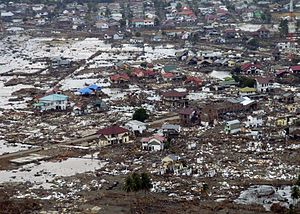
A destroyed town in Sumatra after being hit by a tsunami, caused by the 2004 Indian Ocean earthquake
A tsunami (plural: tsunamis or tsunami; from Japanese: 津波, lit. "harbor wave";[1]English pronunciation: /suːˈnɑːmi/ soo-nah-mee or /tsuːˈnɑːmi/ tsoo-nah-mee[2]) is a series of water waves caused by the displacement of a large volume of a body of water, typically an ocean or a large lake. Earthquakes, volcanic eruptions and otherunderwater explosions (including detonations of underwater nuclear devices), landslides, glacier calvings, meteorite impacts and other disturbances above or below water all have the potential to generate a tsunami.[3]
Tsunami waves do not resemble normal sea waves, because their wavelength is far longer. Rather than appearing as a breaking wave, a tsunami may instead initially resemble a rapidly rising tide, and for this reason they are often referred to as tidal waves. Tsunamis generally consist of a series of waves with periods ranging from minutes to hours, arriving in a so-called "wave train".[4] Wave heights of tens of metres can be generated by large events. Although the impact of tsunamis is limited to coastal areas, their destructive power can be enormous and they can affect entire ocean basins; the 2004 Indian Ocean tsunami was among the deadliest natural disasters in human history with over 230,000 people killed in 14 countries bordering the Indian Ocean.
The Greek historian Thucydides suggested in 426 B.C. that tsunamis were related to submarine earthquakes,[5][6] but the understanding of a tsunami's nature remained slim until the 20th century and much remains unknown. Major areas of current research include trying to determine why some large earthquakes do not generate tsunamis while other smaller ones do; trying to accurately forecast the passage of tsunamis across the oceans; and also to forecast how tsunami waves would interact with specific shorelines.
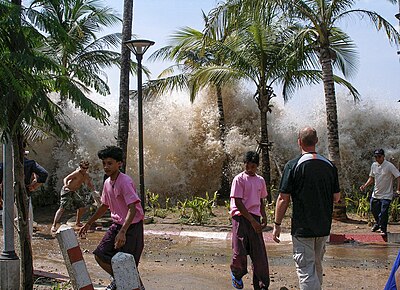
Taken at Ao Nang, Krabi Province, Thailand, during the 2004 Indian Ocean earthquake and tsunami in Thailand
.
Contents[hide] |
Etymology

Lisbon earthquake and tsunami in 1755

The Russians of Pavel Lebedev-Lastochkin in Japan, with their ships tossed inland by a tsunami, meeting some Japanese in 1779
The term tsunami comes from the Japanese 津波, composed of the two kanji 津 (tsu) meaning "harbor" and 波 (nami), meaning "wave". (For the plural, one can either follow ordinary English practice and add an s, or use an invariable plural as in the Japanese.[7])
Tsunami are sometimes referred to as tidal waves. In recent years, this term has fallen out of favor, especially in the scientific community, because tsunami actually have nothing to do withtides. The once-popular term derives from their most common appearance, which is that of an extraordinarily high tidal bore. Tsunami and tides both produce waves of water that move inland, but in the case of tsunami the inland movement of water is much greater and lasts for a longer period, giving the impression of an incredibly high tide. Although the meanings of "tidal" include "resembling"[8] or "having the form or character of"[9] the tides, and the term tsunami is no more accurate because tsunami are not limited to harbours, use of the term tidal wave is discouraged by geologists and oceanographers.
There are only a few other languages that have an equivalent native word. In the Tamil language, the word is aazhi peralai. In the Acehnese language, it is ië beuna or alôn buluëk[10] (Depending on the dialect. Note that in the fellow Austronesian language of Tagalog, a major language in thePhilippines, alon means "wave".) On Simeulue island, off the western coast of Sumatra in Indonesia, in the Defayan language the word is smong, while in the Sigulai language it isemong.[11]
History
Main article: Historic tsunami
As early as 426 B.C. the Greek historian Thucydides inquired in his book History of the Peloponnesian War about the causes of tsunami, and was the first to argue that ocean earthquakes must be the cause.[5][6]
The cause, in my opinion, of this phenomenon must be sought in the earthquake. At the point where its shock has been the most violent the sea is driven back, and suddenly recoiling with redoubled force, causes the inundation. Without an earthquake I do not see how such an accident could happen.[12]
The Roman historian Ammianus Marcellinus (Res Gestae 26.10.15-19) described the typical sequence of a tsunami, including an incipient earthquake, the sudden retreat of the sea and a following gigantic wave, after the 365 A.D. tsunami devastated Alexandria.[13][14]
While Japan may have the longest recorded history of tsunamis, the sheer destruction caused by the 2004 Indian Ocean earthquake and tsunami event mark it as the most devastating of its kind in modern times, killing around 230,000 people. The Sumatran region is not unused to tsunamis either, with earthquakes of varying magnitudes regularly occurring off the coast of the island.[15]
Generation mechanisms
The principal generation mechanism (or cause) of a tsunami is the displacement of a substantial volume of water or perturbation of the sea.[16] This displacement of water is usually attributed to either earthquakes, landslides, volcanic eruptions, glacier calvings or more rarely by meteorites and nuclear tests.[17][18] The waves formed in this way are then sustained by gravity. Tides do not play any part in the generation of tsunamis.
Tsunami generated by seismicity
Tsunami can be generated when the sea floor abruptly deforms and vertically displaces the overlying water. Tectonic earthquakes are a particular kind of earthquake that are associated with the Earth's crustal deformation; when these earthquakes occur beneath the sea, the water above the deformed area is displaced from its equilibrium position.[19] More specifically, a tsunami can be generated when thrust faultsassociated with convergent or destructive plate boundaries move abruptly, resulting in water displacement, owing to the vertical component of movement involved. Movement on normal faults will also cause displacement of the seabed, but the size of the largest of such events is normally too small to give rise to a significant tsunami.
- Drawing of tectonic plate boundary beforeearthquake
- Overriding plate bulges under strain, causingtectonic uplift.
- Plate slips, causingsubsidence and releasing energy into water.
Tsunamis have a small amplitude (wave height) offshore, and a very long wavelength (often hundreds of kilometers long, whereas normal ocean waves have a wavelength of only 30 or 40 metres),[20] which is why they generally pass unnoticed at sea, forming only a slight swell usually about 300 millimetres (12 in) above the normal sea surface. They grow in height when they reach shallower water, in a wave shoalingprocess described below. A tsunami can occur in any tidal state and even at low tide can still inundate coastal areas.
On April 1, 1946, a magnitude-7.8 (Richter Scale) earthquake occurred near the Aleutian Islands, Alaska. It generated a tsunami which inundated Hilo on the island of Hawai'i with a 14 metres (46 ft) high surge. The area where the earthquake occurred is where the Pacific Ocean floor is subducting (or being pushed downwards) under Alaska.
Examples of tsunami originating at locations away from convergent boundaries include Storegga about 8,000 years ago, Grand Banks 1929,Papua New Guinea 1998 (Tappin, 2001). The Grand Banks and Papua New Guinea tsunamis came from earthquakes which destabilized sediments, causing them to flow into the ocean and generate a tsunami. They dissipated before traveling transoceanic distances.
The cause of the Storegga sediment failure is unknown. Possibilities include an overloading of the sediments, an earthquake or a release of gas hydrates (methane etc.)
The 1960 Valdivia earthquake (Mw 9.5) (19:11 hrs UTC), 1964 Alaska earthquake (Mw 9.2), 2004 Indian Ocean earthquake (Mw 9.2) (00:58:53 UTC) and 2011 Tōhoku earthquake (Mw9.0) are recent examples of powerful megathrust earthquakes that generated tsunamis (known as teletsunamis) that can cross entire oceans. Smaller (Mw 4.2) earthquakes in Japan can trigger tsunamis (called local andregional tsunamis) that can only devastate nearby coasts, but can do so in only a few minutes.
Tsunami generated by landslides
In the 1950s, it was discovered that larger tsunamis than had previously been believed possible could be caused by giant landslides. Underwater landslides that generate tsunamis are called sciorrucks.[21] These phenomena rapidly displace large water volumes, as energy from falling debris or expansion transfers to the water at a rate faster than the water can absorb. Their existence was confirmed in 1958, when a giant landslide in Lituya Bay, Alaska, caused the highest wave ever recorded, which had a height of 524 metres (over 1700 feet). The wave didn't travel far, as it struck land almost immediately. Two people fishing in the bay were killed, but another boat amazingly managed to ride the wave. Scientists named these waves megatsunami.
Scientists discovered that extremely large landslides from volcanic island collapses can generate megatsunamis that can cross oceans.
Meteotsunamis
Some meteorological conditions, such as deep depressions that cause tropical cyclones, can generate a storm surge, called ameteotsunami, which can raise tides several metres above normal levels. The displacement comes from low atmospheric pressure within the centre of the depression. As these storm surges reach shore, they may resemble (though are not) tsunamis, inundating vast areas of land.[22]
Characteristics
Tsunamis cause damage by two mechanisms: the smashing force of a wall of water travelling at high speed, and the destructive power of a large volume of water draining off the land and carrying all with it, even if the wave did not look large.
While everyday wind waves have a wavelength (from crest to crest) of about 100 metres (330 ft) and a height of roughly 2 metres (6.6 ft), a tsunami in the deep ocean has a wavelength of about 200 kilometres (120 mi). Such a wave travels at well over 800 kilometres per hour (500 mph), but owing to the enormous wavelength the wave oscillation at any given point takes 20 or 30 minutes to complete a cycle and has an amplitude of only about 1 metre (3.3 ft).[23] This makes tsunamis difficult to detect over deep water. Ships rarely notice their passage.
This is the reason for the Japanese name "harbor wave": sometimes a village's fishermen would sail out, and encounter no unusual waves while out at sea fishing, and come back to land to find their village devastated by a huge wave.
As the tsunami approaches the coast and the waters become shallow, wave shoaling compresses the wave and its speed decreases below 80 kilometres per hour (50 mph). Its wavelength diminishes to less than 20 kilometres (12 mi) and its amplitude grows enormously. Since the wave still has the same very long period, the tsunami may take minutes to reach full height. Except for the very largest tsunamis, the approaching wave does not break, but rather appears like a fast-moving tidal bore.[24] Open bays and coastlines adjacent to very deep water may shape the tsunami further into a step-like wave with a steep-breaking front.
When the tsunami's wave peak reaches the shore, the resulting temporary rise in sea level is termed run up. Run up is measured in metres above a reference sea level.[24] A large tsunami may feature multiple waves arriving over a period of hours, with significant time between the wave crests. The first wave to reach the shore may not have the highest run up.[25]
About 80% of tsunamis occur in the Pacific Ocean, but they are possible wherever there are large bodies of water, including lakes. They are caused by earthquakes, landslides, volcanic explosions, glacier calvings, and bolides.
Drawback
If the first part of a tsunami to reach land is a trough—called a drawback—rather than a wave crest, the water along the shoreline recedes dramatically, exposing normally submerged areas.
A drawback occurs because the water propagates outwards with the trough of the wave at its front. Drawback begins before the wave arrives at an interval equal to half of the wave's period. Drawback can exceed hundreds of metres, and people unaware of the danger sometimes remain near the shore to satisfy their curiosity or to collect fish from the exposed seabed.
Scales of intensity and magnitude
As with earthquakes, several attempts have been made to set up scales of tsunami intensity or magnitude to allow comparison between different events.[26]
Intensity scales
The first scales used routinely to measure the intensity of tsunami were the Sieberg-Ambraseys scale, used in the Mediterranean Sea and the Imamura-Iida intensity scale, used in the Pacific Ocean. The latter scale was modified by Soloviev, who calculated the Tsunami intensityI according to the formula
where  is the average wave height along the nearest coast. This scale, known as the Soloviev-Imamura tsunami intensity scale, is used in the global tsunami catalogues compiled by the NGDC/NOAA and the Novosibirsk Tsunami Laboratory as the main parameter for the size of the tsunami.
is the average wave height along the nearest coast. This scale, known as the Soloviev-Imamura tsunami intensity scale, is used in the global tsunami catalogues compiled by the NGDC/NOAA and the Novosibirsk Tsunami Laboratory as the main parameter for the size of the tsunami.
 is the average wave height along the nearest coast. This scale, known as the Soloviev-Imamura tsunami intensity scale, is used in the global tsunami catalogues compiled by the NGDC/NOAA and the Novosibirsk Tsunami Laboratory as the main parameter for the size of the tsunami.
is the average wave height along the nearest coast. This scale, known as the Soloviev-Imamura tsunami intensity scale, is used in the global tsunami catalogues compiled by the NGDC/NOAA and the Novosibirsk Tsunami Laboratory as the main parameter for the size of the tsunami.Magnitude scales
The first scale that genuinely calculated a magnitude for a tsunami, rather than an intensity at a particular location was the ML scale proposed by Murty & Loomis based on the potential energy.[26] Difficulties in calculating the potential energy of the tsunami mean that this scale is rarely used. Abe introduced the tsunami magnitude scale  , calculated from,
, calculated from,
 , calculated from,
, calculated from,where h is the maximum tsunami-wave amplitude (in m) measured by a tide gauge at a distance R from the epicenter, a, b & D are constants used to make the Mt scale match as closely as possible with the moment magnitude scale.[27]
Warnings and predictions
See also: Tsunami warning system
Drawbacks can serve as a brief warning. People who observe drawback (many survivors report an accompanying sucking sound), can survive only if they immediately run for high ground or seek the upper floors of nearby buildings. In 2004, ten-year old Tilly Smith of Surrey, England, was onMaikhao beach in Phuket, Thailand with her parents and sister, and having learned about tsunamis recently in school, told her family that a tsunami might be imminent. Her parents warned others minutes before the wave arrived, saving dozens of lives. She credited her geography teacher, Andrew Kearney.
In the 2004 Indian Ocean tsunami drawback was not reported on the African coast or any other east-facing coasts that it reached. This was because the wave moved downwards on the eastern side of the fault line and upwards on the western side. The western pulse hit coastal Africa and other western areas.
A tsunami cannot be precisely predicted, even if the magnitude and location of an earthquake is known. Geologists, oceanographers, and seismologists analyse each earthquake and based on many factors may or may not issue a tsunami warning. However, there are some warning signs of an impending tsunami, and automated systems can provide warnings immediately after an earthquake in time to save lives. One of the most successful systems uses bottom pressure sensors, attached to buoys, which constantly monitor the pressure of the overlying water column.
Regions with a high tsunami risk typically use tsunami warning systems to warn the population before the wave reaches land. On the west coast of the United States, which is prone to Pacific Ocean tsunami, warning signs indicate evacuation routes. In Japan, the community is well-educated about earthquakes and tsunamis, and along the Japanese shorelines the tsunami warning signs are reminders of the natural hazards together with a network of warning sirens, typically at the top of the cliff of surroundings hills.[28]
The Pacific Tsunami Warning System is based in Honolulu, Hawaiʻi. It monitors Pacific Ocean seismic activity. A sufficiently large earthquake magnitude and other information triggers a tsunami warning. While the subduction zones around the Pacific are seismically active, not all earthquakes generate tsunami. Computers assist in analysing the tsunami risk of every earthquake that occurs in the Pacific Ocean and the adjoining land masses.
- Tsunami hazard sign atBamfield, British Columbia
- The monument to the victims of tsunami atLaupahoehoe, Hawaii
- Tsunami memorial inKanyakumari beach
As a direct result of the Indian Ocean tsunami, a re-appraisal of the tsunami threat for all coastal areas is being undertaken by national governments and the United Nations Disaster Mitigation Committee. A tsunami warning system is being installed in the Indian Ocean.
Computer models can predict tsunami arrival, usually within minutes of the arrival time. Bottom pressure sensors relay information in real time. Based on these pressure readings and other seismic information and the seafloor's shape (bathymetry) and coastal topography, the models estimate the amplitude and surge height of the approaching tsunami. All Pacific Rim countries collaborate in the Tsunami Warning System and most regularly practice evacuation and other procedures. In Japan, such preparation is mandatory for government, local authorities, emergency services and the population.
Some zoologists hypothesise that some animal species have an ability to sense subsonicRayleigh waves from an earthquake or a tsunami. If correct, monitoring their behavior could provide advance warning of earthquakes, tsunami etc. However, the evidence is controversial and is not widely accepted. There are unsubstantiated claims about the Lisbon quake that some animals escaped to higher ground, while many other animals in the same areas drowned. The phenomenon was also noted by media sources in Sri Lanka in the 2004 Indian Ocean earthquake.[29][30] It is possible that certain animals (e.g., elephants) may have heard the sounds of the tsunami as it approached the coast. The elephants' reaction was to move away from the approaching noise. By contrast, some humans went to the shore to investigate and many drowned as a result.
Along the United States west coast, in addition to sirens, warnings are sent on television & radio via the National Weather Service, using the Emergency Alert System.
Forecast of tsunami attack probability
Kunihiko Shimazaki (University of Tokyo), a member of Earthquake Research committee of The Headquarters for Earthquake Research Promotion of Japanese government, mentioned the plan to public announcement of tsunami attack probability forecast at Japan National Press Club on 12 May 2011. The forecast includes tsunami height, attack area and occurrence probability within 100 years ahead. The forecast would integrate the scientific knowledge of recent interdisciplinarity andaftermath of the 2011 Tōhoku earthquake and tsunami. As the plan, announcement will be available from 2014.[31][32][33]
Mitigation
See also: Tsunami barrier
In some tsunami-prone countries earthquake engineering measures have been taken to reduce the damage caused onshore. Japan, where tsunami science and response measures first began following a disaster in 1896, has produced ever-more elaborate countermeasures and response plans.[34] That country has built many tsunami walls of up to 4.5 metres (15 ft) to protect populated coastal areas. Other localities have built floodgates and channels to redirect the water from incoming tsunami. However, their effectiveness has been questioned, as tsunami often overtop the barriers. For instance, the Okushiri, Hokkaidō tsunami which struck Okushiri Island of Hokkaidō within two to five minutes of the earthquake on July 12, 1993 created waves as much as 30 metres (100 ft) tall—as high as a 10-story building. The port town of Aonae was completely surrounded by a tsunami wall, but the waves washed right over the wall and destroyed all the wood-framed structures in the area. The wall may have succeeded in slowing down and moderating the height of the tsunami, but it did not prevent major destruction and loss of life.[35]
As a weapon
There have been studies and at least one attempt to create tsunami waves as a weapon. In World War II, the New Zealand Military Forcesinitiated Project Seal, which attempted to create small tsunamis with explosives in the area of today's Shakespear Regional Park; the attempt failed.[36]
kita janganlah berasa terlalu nyaman duduk di Malaysia ni. kita perlu juga membenarkan minta kita menerima hakikat tidak mustahil bencana akan menimpa kita (malaysia)...sama ada secara langsung @ tidak langsung... pernahkah kalian terfikir kenapa tujuan, misi & visi PLKN tu d adakan... kenapa perlu kita bangkang & bantah... lihatlah hasilnya kini PLKN tu dah jadi sambil lewa.. fikir-fikirkan lah wahai kawan2 semua...
ask yourself... apa yang kalian patut lakukan sekiranya tempat kalian bergegar yang sangat kuat akibat gempabumi? apa yg patut kamu lakuan sekiranya berlaku tanah runtuh & rumah d landa ribut taufan... pernahkah kamu terfikir sekiranya kita d serang, ke manakah arah tujuan & haluan kita... apa yang patut kita lakukan untuk lindungi keluarga kita??? sedangkan bila siren ambulan berbunyi, jarang sekali kereta nak beri laluan... ini adalah pengalaman saya sendiri. saya berbangga menjadi warga Jabatan Pertahanan Awam Malaysia...
Langgan:
Catatan (Atom)














